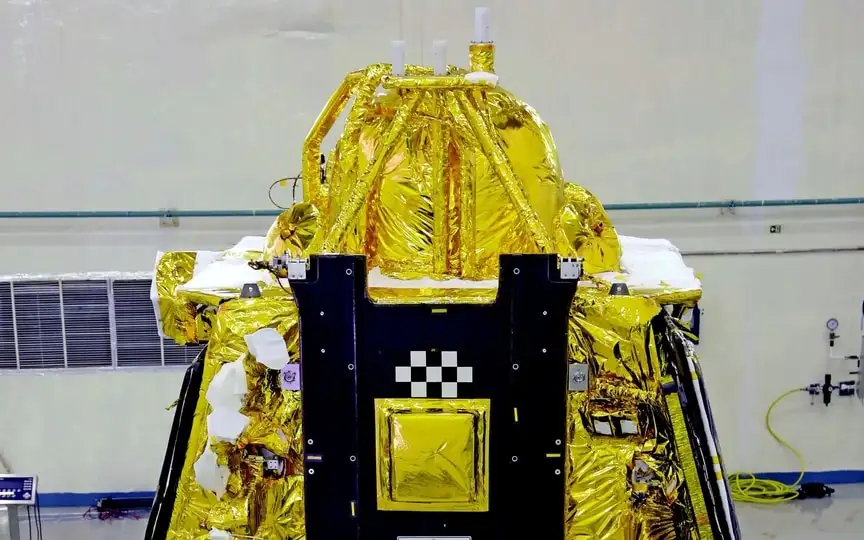Vikram Lander’s Historic Descent to the Lunar South Pole Achieved by Chandrayaan 3
The Indian Space Research Organization (ISRO) is preparing for the Automatic Landing Sequence (ALS) of Chandrayaan-3’s Vikram lander at the lunar South Pole. The powered descent began at approximately 5:44 pm IST and lasted about 20 minutes. Throughout this time, the Vikram lander will undergo four crucial stages before finally landing.
India’s third lunar mission, launched on July 14 from the Satish Dhawan Space Center in Sriharikota, aims to make India the fourth country to achieve a soft landing on the Moon and the first country near the Moon’s south pole. Vikram’s designated landing zone is located between Manzinus C and Simpelius N craters, located at approximately 69 degrees south latitude on the lunar surface.
Minute by minute descent from “Vikram” Lander
Currently, the Vikram lander is orbiting the Moon at an altitude of 25 km in the horizontal plane. The initial phase is a “rough braking phase” that begins 20 minutes before landing, during which the counter, traveling at 1.68 km/s, begins its descent. Vikram’s four engines guide it towards the landing site. During this phase, the lander will drop its height to 7.42 kilometers and travel a distance of 713.5 kilometers on the lunar surface. This phase lasts about 11 minutes and ends 4.5 minutes before landing, leaving only two of Vikram’s engines active.
The important thing is that the whole landing process happens automatically without the intervention of the mission team. When the ALS starts, the on-board computer takes over and ISRO confirms the sequential execution of the commands. The second phase is the “attitude hold phase”, where the lander adjusts his heading to a vertical position and covers a distance of 3.48 km.
This is followed by a “fine break-in phase” that lasts about three minutes. At this point, ‘Vikram’ is traveling at a speed of 28.5 km per second and will decrease its height to about 1 km in three minutes. The last 1.5 minutes of the episode mark the final descent, during which the lander descends to the surface of the moon, reaching almost zero speed.
ISRO’s careful planning and automated landing process demonstrate India’s commitment to lunar exploration. The successful completion of these precise steps is a major milestone in India’s space ambitions, potentially unlocking valuable space discoveries in the region.




